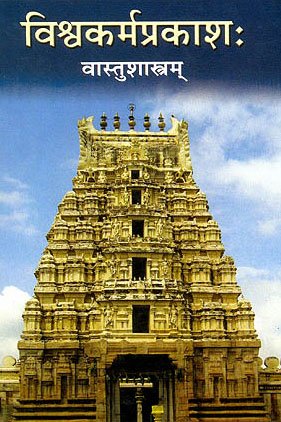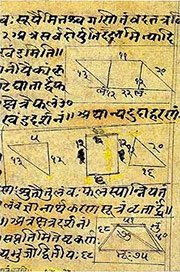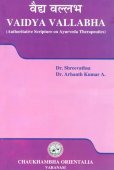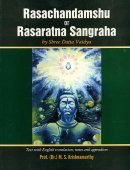Mishraka, Miśraka, Miśrakā: 14 definitions
Introduction:
Mishraka means something in Hinduism, Sanskrit, Jainism, Prakrit. If you want to know the exact meaning, history, etymology or English translation of this term then check out the descriptions on this page. Add your comment or reference to a book if you want to contribute to this summary article.
The Sanskrit terms Miśraka and Miśrakā can be transliterated into English as Misraka or Mishraka, using the IAST transliteration scheme (?).
In Hinduism
Vastushastra (architecture)
Source: Wisdom Library: Vāstu-śāstraMiśraka (मिश्रक):—The Sanskrit name for a group of temples (prāsāda) containing 9 unique varieties. It is described in the 11th-century Samarāṅgaṇasūtradhāra (chapter 56) by Bhojadeva.
The Miśraka group contains the following twenty-five temple classifications:
- Subhadra,
- Yokiṭa,
- Sarvatobhadra,
- Siṃhakesarī,
- Citrakūṭa,
- Dharādhara,
- Tilaka,
- Svatilaka,
- Sarvāṅgasundara.
These are the names of 9 out of a total of 64 temple types mentioned in same chapter.

Vastushastra (वास्तुशास्त्र, vāstuśāstra) refers to the ancient Indian science (shastra) of architecture (vastu), dealing with topics such architecture, sculpture, town-building, fort building and various other constructions. Vastu also deals with the philosophy of the architectural relation with the cosmic universe.
Purana and Itihasa (epic history)
Source: archive.org: Puranic Encyclopedia1) Miśraka (मिश्रक).—A special tribe of horses. (Dākṣiṇātya Pāṭha, Chapter 38, Sabhā Parva).
2) Miśraka (मिश्रक).—A garden in the city of Dvārakā. The city shines more by this divine garden. (Dākṣiṇātya Pāṭha, Chapter 38, Sabhā Parva).
3) Miśraka (मिश्रक).—A sacred place within the boundaries of Kurukṣetra. If one bathes in a holy pond there one would get the benefit of bathing in all the sacred ponds in India. (Śloka 91, Chapter 81, Vana Parva).
Source: JatLand: List of Mahabharata people and placesMiśraka (मिश्रक) refers to the name of a Tīrtha (pilgrim’s destination) mentioned in the Mahābhārata (cf. III.81.76). Note: The Mahābhārata (mentioning Miśraka) is a Sanskrit epic poem consisting of 100,000 ślokas (metrical verses) and is over 2000 years old.

The Purana (पुराण, purāṇas) refers to Sanskrit literature preserving ancient India’s vast cultural history, including historical legends, religious ceremonies, various arts and sciences. The eighteen mahapuranas total over 400,000 shlokas (metrical couplets) and date to at least several centuries BCE.
Ganitashastra (Mathematics and Algebra)
Source: archive.org: Hindu MathematicsMiśraka (मिश्रक) refers to “mixed quantities” according to the principle of Interest which is a section of pāṭīgaṇita (“science of calculation which requires the use of writing material—the board”) in ancient Indian mathematics (gaṇita-śāstra).—The ordinary problems relating to the finding out of interest, principal or time etc., the other quantities being given, occur in the section dealing with the Rule of Five. The Hindu works generally contain a section called miśraka-vyavahāra (“calculations relating to mixed quantities”) in which occur miscellaneous problems on interest. The contents of this section vary in different works, according to their size and scope. Thus the Āryabhaṭīya contains only one rule relating to a problem on interest, whilst the Gaṇitasāra-saṃgraha has a large number of such rules and problems.

Ganitashastra (शिल्पशास्त्र, gaṇitaśāstra) refers to the ancient Indian science of mathematics, algebra, number theory, arithmetic, etc. Closely allied with astronomy, both were commonly taught and studied in universities, even since the 1st millennium BCE. Ganita-shastra also includes ritualistic math-books such as the Shulba-sutras.
In Jainism
General definition (in Jainism)
Source: archive.org: TrisastisalakapurusacaritraMiśrakā (मिश्रका) is the friend of Añjanasundarī, the daughter of Hṛdayasundarī and Mahendra (king of the similarly-named city), according to the Jain Ramayana and chapter 7.2 [Rāvaṇa’s expedition of conquest] of Hemacandra’s 11th century Triṣaṣṭiśalākāpuruṣacaritra: an ancient Sanskrit epic poem narrating the history and legends of sixty-three illustrious persons in Jainism.

Jainism is an Indian religion of Dharma whose doctrine revolves around harmlessness (ahimsa) towards every living being. The two major branches (Digambara and Svetambara) of Jainism stimulate self-control (or, shramana, ‘self-reliance’) and spiritual development through a path of peace for the soul to progess to the ultimate goal.
Languages of India and abroad
Sanskrit dictionary
Source: DDSA: The practical Sanskrit-English dictionaryMiśraka (मिश्रक).—a. [miśr-ṇvul]
1) Mixed, mingled.
2) Mixing, adulterating.
3) Miscellaneous.
-kaḥ 1 A compounder.
2) An adulterator of mercantile goods; आतिरेक्यं तु मिश्रकः (ātirekyaṃ tu miśrakaḥ) Manusmṛti 11.5.
-kam 1 Salt produced from salt soil.
2) The garden of Indra, (also miśrakāvaṇam).
3) Singing out of tune.
Source: Cologne Digital Sanskrit Dictionaries: Edgerton Buddhist Hybrid Sanskrit DictionaryMiśraka (मिश्रक).—nt., (1) a kind of literary composition, according to Tibetan spel ma, a mixture of prose and verse (compare Sanskrit miśra, -ka): Mahāvyutpatti 1456; the surrounding terms denote kinds of commentaries, paddhati and ṭīkā; (2) (= Pali missaka, nt.), name of a pleasure-grove of the gods, pre- sumably = next: °ke, loc. sg., Lalitavistara 45.5 (verse).
Source: Cologne Digital Sanskrit Dictionaries: Shabda-Sagara Sanskrit-English DictionaryMiśraka (मिश्रक).—m.
(-kaḥ) 1. An adulterator of commodities, &c. 2. A mixer, a compounder. n.
(-kaṃ) 1. A garden of the gods, a grove of paradise. 2. A description of song or singing. 3. A kind of salt. E. miśra mingled, (flowers, &c.) and kan aff.
Source: Cologne Digital Sanskrit Dictionaries: Benfey Sanskrit-English DictionaryMiśraka (मिश्रक).—[miśra + ka], I. m. 1. A mixer. 2. An adulterator of commodities, a mixer of bad wares with good ones, [Mānavadharmaśāstra] 11, 50. Ii. n. A grove of paradise.
Source: Cologne Digital Sanskrit Dictionaries: Cappeller Sanskrit-English DictionaryMiśraka (मिश्रक).—[adjective] mingled, miscellaneous; mixing, adulterating.
Source: Cologne Digital Sanskrit Dictionaries: Monier-Williams Sanskrit-English Dictionary1) Miśraka (मिश्रक):—[from miśr] mfn. mixed (either ‘not pure’ or ‘various, manifold’), [Varāha-mihira; Suśruta] (with guṇa-sthāna n. Name of the third degree on the way to final emancipation, [Jaina literature])
2) [v.s. ...] singing out of tune, [Saṃgīta-sārasaṃgraha]
3) [v.s. ...] m. a mixer or adulterator (of grain etc.), [Manu-smṛti xi, 50]
4) [v.s. ...] salt produced from salt soil, [cf. Lexicographers, esp. such as amarasiṃha, halāyudha, hemacandra, etc.]
5) [v.s. ...] a pigment produced from clarified butter, [cf. Lexicographers, esp. such as amarasiṃha, halāyudha, hemacandra, etc.]
6) [v.s. ...] Name of a Tīrtha, [Mahābhārata]
7) [v.s. ...] of a grove or garden of paradise, [cf. Lexicographers, esp. such as amarasiṃha, halāyudha, hemacandra, etc.]
Source: Cologne Digital Sanskrit Dictionaries: Yates Sanskrit-English DictionaryMiśraka (मिश्रक):—[(kaḥ-kā-kaṃ) a.] Mixing, mixer. n. A garden of the gods; a kind of song or singing.
[Sanskrit to German]
Sanskrit, also spelled संस्कृतम् (saṃskṛtam), is an ancient language of India commonly seen as the grandmother of the Indo-European language family (even English!). Closely allied with Prakrit and Pali, Sanskrit is more exhaustive in both grammar and terms and has the most extensive collection of literature in the world, greatly surpassing its sister-languages Greek and Latin.
See also (Relevant definitions)
Starts with: Mishrakadi, Mishrakadivarga, Mishrakapi, Mishrakavana, Mishrakavya, Mishrakavyavahara.
Ends with: Trimishraka, Vimishraka, Vyamishraka.
Full-text: Mishrakavana, Mishrakavyavahara, Yokita, Simhakesari, Sarvangasundara, Tilaka, Svatilaka, Vimishraka, Subhadra, Vanga, Sarvatobhadra, Vyavahara, Citrakuta, Patiganita, Interest.
Relevant text
Search found 17 books and stories containing Mishraka, Miśraka, Miśrakā, Misraka; (plurals include: Mishrakas, Miśrakas, Miśrakās, Misrakas). You can also click to the full overview containing English textual excerpts. Below are direct links for the most relevant articles:
Rasa Jala Nidhi, vol 3: Metals, Gems and other substances (by Bhudeb Mookerjee)
Part 1 - Characteristics of Tin (vanga) < [Chapter VI - Metals (6): Vanga (tin)]
Rasa Jala Nidhi, vol 1: Initiation, Mercury and Laboratory (by Bhudeb Mookerjee)
Part 2 - Different kinds of Mercury < [Chapter III - Parada (Mercury)]
Part 3 - Etymologial significance of the different names of Mercury < [Chapter III - Parada (Mercury)]
Karmic Astrology—a Study (by Sunita Anant Chavan)
Part 2.4 - Prime Purposes of Cultivation of Jyotiḥśāstra < [Chapter 2 - Jyotiḥśāstra and the Concept of Karman]
List of Mahabharata people and places (by Laxman Burdak)
Manusmriti with the Commentary of Medhatithi (by Ganganatha Jha)
Verse 11.49-52 < [Section V - Physical Effects of Unexpiated Offences committed in Previous Lives]
Vastu-shastra (5): Temple Architecture (by D. N. Shukla)
Related products

